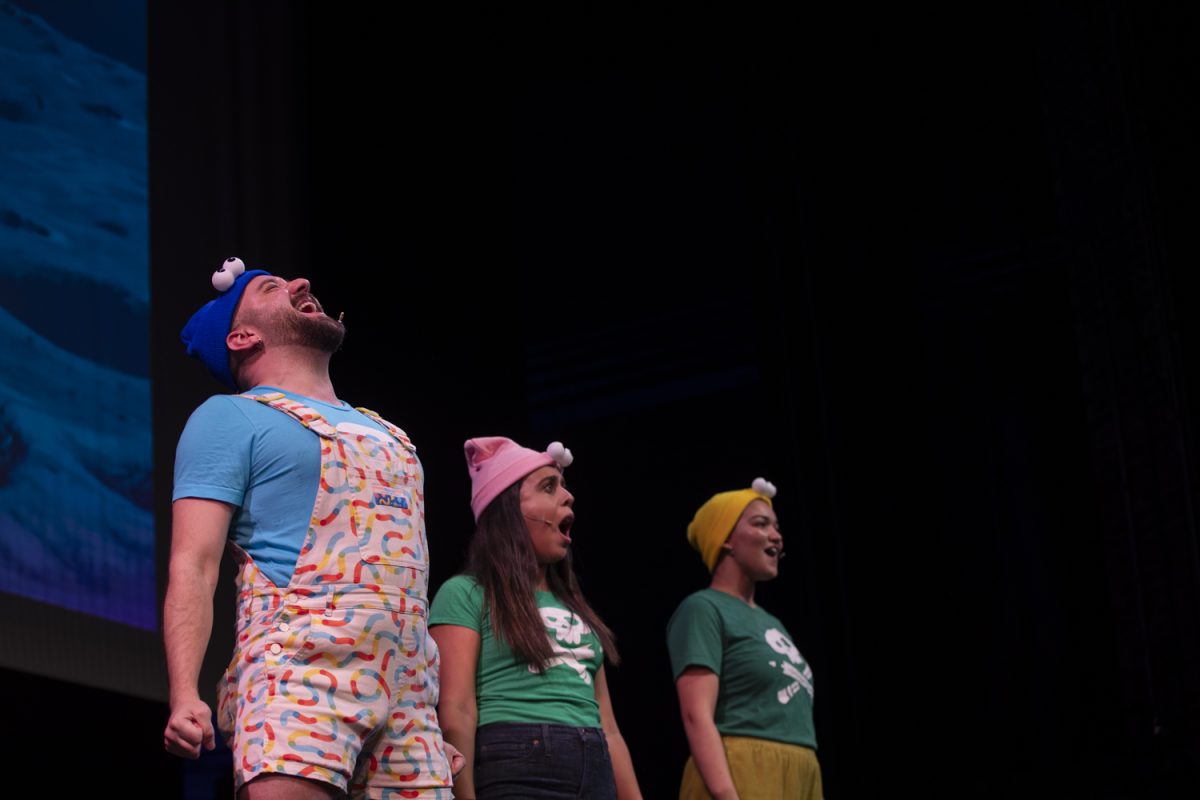The cast members of Mary’s Wedding tapped into their childhoods while re-creating the script written by Stephen Massicotte. The director and actors had to use their imagination to create a horse and stage a war.
“It allows us to kind of be kids in a way that’s fun,” director Sean Christopher Lewis said.
Mary’s Wedding will open at 7:30 p.m. today at Riverside Theatre, 213 N. Gilbert St. The play will continue through April 18 with shows starting at 7:30 p.m. Thursdays through Saturdays, 2 p.m. on Sundays. The show will not be performed on April 4. Admission ranges from $12 to $26.
The events in Mary’s Wedding occur in a dream that Mary (played by Kalen Harriman) has the night before her wedding. In the recurring dream, Mary relives meeting Charlie (played by Martin Andrews), falling in love, receiving his letters from the trenches of World World I, and imagining his life there as he experiences the horrors of battle.
With only two cast members, the story keeps the focus on the main characters and their relationship. Lewis was drawn to the play because of the creative challenge the two-person show presents.
“A typical boy-meets-girl-story is pretty hard to screw up,” he said. “But this is a play in which there’s so much imagination, and it’s constantly turning on you.”
The director said the message of Mary’s Wedding addresses the idealism of love versus the reality of love, which is hidden behind a classic romance. Because the play is a story that is “chopped up and the pieces land where they land,” Harriman said the hints and triggers that take you from one place to another are essential.
The design elements, such as lighting and sound, work in themes. Color schemes help the audience better understand what time frame the story is in. A magenta wash is used to symbolize the past, and darker colors are used in war scenes.
Sound cues also help the transitions — the past is triggered by the sound of rain, and guns and explosions indicate a war scene.
“It’s a very sensory experience,” Harriman said.
Even though the set and costumes do not change throughout the show, the production team still manages to create a highly interactive environment. And while the lighting and sound do guide the audience from one scene to the next, Lewis feels the characters are the most vital element.
“The actors have the ability to pull it off emotionally, so you believe the transformation,” he said.
The director is also impressed with how the two characters interact with the other design elements, which, he said, makes the show a more well-rounded experience.
Despite all of the dramatic effects, the script is what initially attracted Harriman to the production.
“I liked the script because it’s very poetic and cinematic,” she said. “It has beautiful language on top of a beautiful story.”






